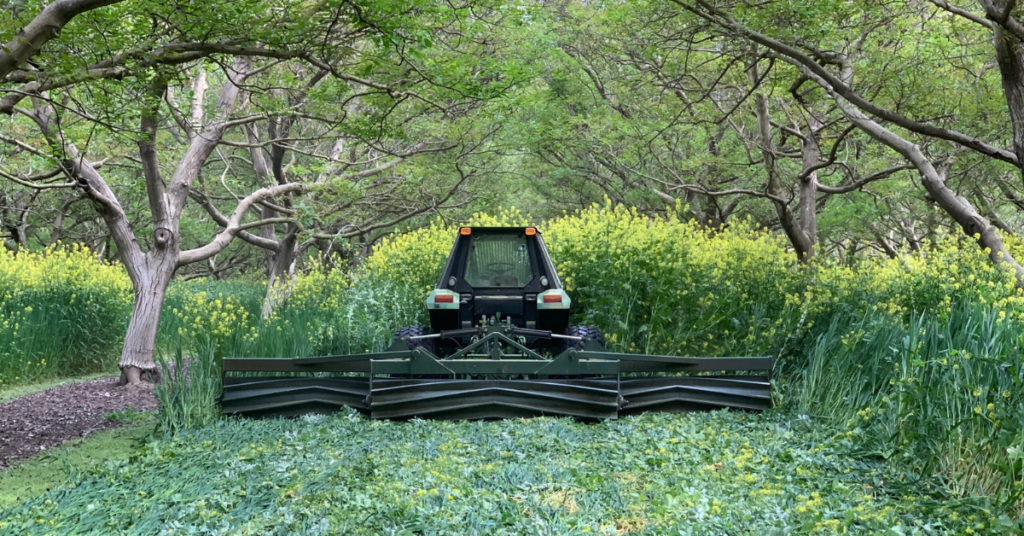
November/December 2024
Regenerative practices have yielded Unruh Walnut Farms big dividends in chemical savings
Under the leadership of Daniel Unruh, the second- generation-run farm transitioned to regenerative farming practices in 2011. The shift resulted in enhanced biodiversity and improved soil health in the 193- acre walnut orchard.
Unruh grew up on a South Dakota farm, which he and his father quit in 2002 before the younger Unruh moved to California in 2006, where he worked for a custom farmer and landscaper until he married his wife, Rachelle. A year before marriage, his father-in-law bought land in Colusa County to turn over to the couple once it was ready.

That generosity led Unruh to become a walnut farmer.
“All 193 acres of walnuts were planted at the same time,” Unruh said. “My father-in-law planted them the month we got married in 2010 and I took over the operation.” The farm regularly produces 772,000 pounds of in-shell walnuts a year, a figure that has remained consistent through the last few years.
The road to regenerative
Unruh embarked on his regenerative journey after discovering a nematode problem in his orchard that synthetic treatments could not remedy.
“I kind of stumbled onto this accidentally,” Unruh said. “In 2011, we realized my trees weren’t growing very well, and the next year, my father-in-law realized there was something going on beyond fertility.”
That’s when they discovered the nematode issue.
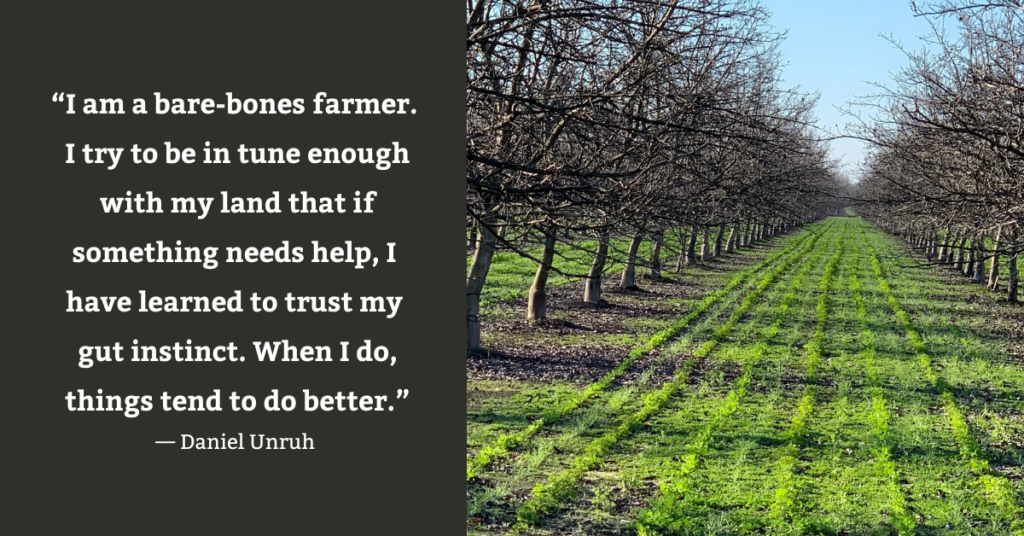
Throwing the chemistry book at the issue didn’t help. “I was sitting on the tractor mowing my orchard and I started thinking about a product I learned about at Davis, a mustard derivative, and they said they would give me enough to do 10-12 trees. Well, I have 11,000 trees,” Unruh said.
He did some research and learned that regions of Oregon, Washington and Idaho that produce vegetables, plant mustard cover crops growers terminate before tilling, specifically for nematode control.

So, a lightbulb went off for Unruh — why not just plant mustard and let it decompose back into the soil?
“When I terminated my crop in April, it was quite tall — almost 8 feet — and about a month after, we took nematode samples and I reduced my numbers by 40%,” he said. “In 2018, my nematode numbers came back as ‘no nematodes found.’ This past year, the count came back as less than 100 count per 500 ccs. And I started out at over 5,000.”
That put him on the road to more cover cropping to reduce synthetic chemical and synthetic fertilizer inputs. By implementing cover crops, holistic soil management and effective farm management techniques, Unruh successfully addressed the nematode issue.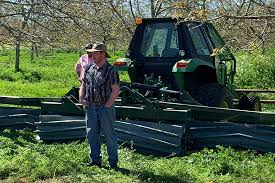
“We started doing the whole cover crop thing in more diverse species mixes,” he said. “There was one year I planted almost 30 different species out there. It seems to be working well.”
In addition to utilizing cover crops, Unruh practices no-till farming in the orchard, employing methods like crimping the cover crops or grazing sheep before May 1. Since 2017, he has refrained from using sprays or insecticides, opting instead for holistic pest management strategies that incorporate beneficial insects.
“I try to operate as holistically as I can,” Unruh said. “Instead of spraying chemicals for pesticides — and I’m not against spraying pesticides entirely if there is no other alternative — but if there is an alternative, I like to not spray pesticides.”
Another big issue with walnuts is twospotted spider mites, especially bad in 2024, and Unruh got by with spraying half contact spray one time.
“I haven’t sprayed my trees with a systemic since 2016,” he said.
Unique tech philosophy
While many walnut farmers utilize field moisture probes to track things, Unruh chooses not to use them and in fact, he doesn’t use a lot of technology.
“I am a bare-bones farmer,” he said. “I try to be in tune enough with my land that if something needs help, I have learned to trust my gut instinct. When I do, things tend to do better.”
Unruh uses a cover crop planter that he noted is “way more sophisticated” than he needed, but finds it works for his needs.
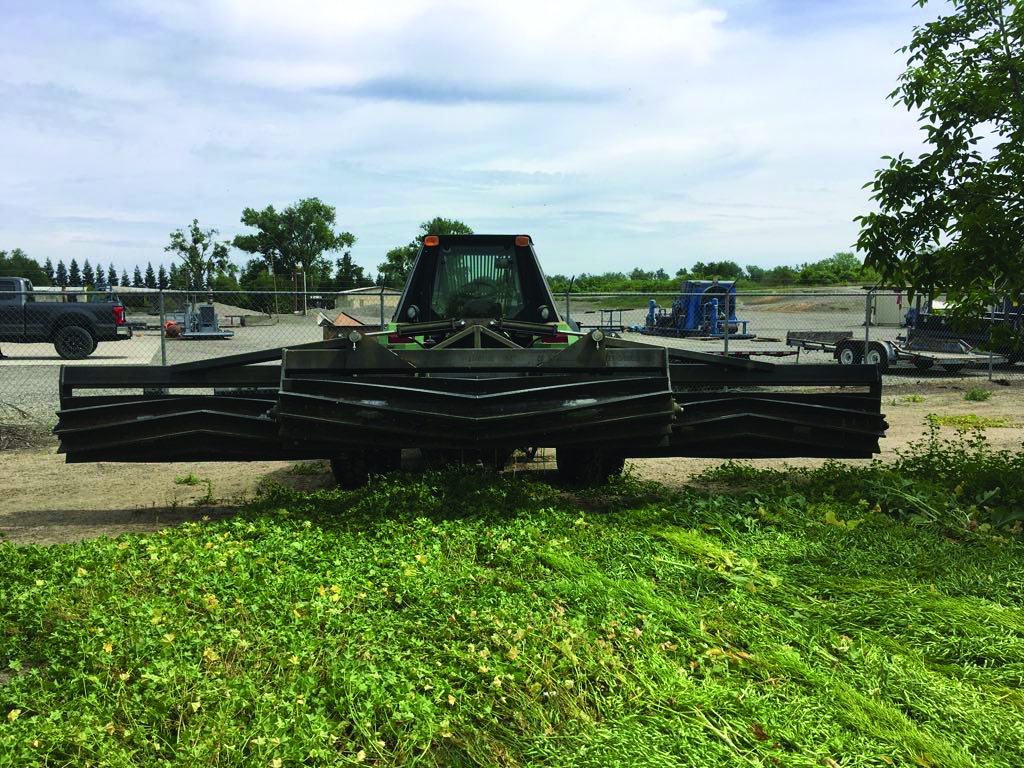
In 2018, Unruh innovated by building a Chevron-style cover crop crimper roller that he uses to terminate his cover crop in the spring. With three rollers, two folding, the machinery is between 6,000-6,500 pounds and 21 feet wide.
For postharvest, Unruh tries to get the cover crops in as soon as possible after harvest. He also uses a float he custom built to smooth out the biomass on the ground and then puts the trees to bed for the winter.
A new direct-to-consumer venture
Daniel and Rachelle are starting a new venture utilizing their walnuts — Harvest Valley.
“We are trying to go direct-to-consumer with some of our products,” Unruh said. “When you accept all the middlemen’s hats, you have to accept their overhead, so we’re trying to get something off the ground soon.”
In recent years, the couple has sold walnuts in farmers markets on Wednesdays and Saturdays, a big customer source.
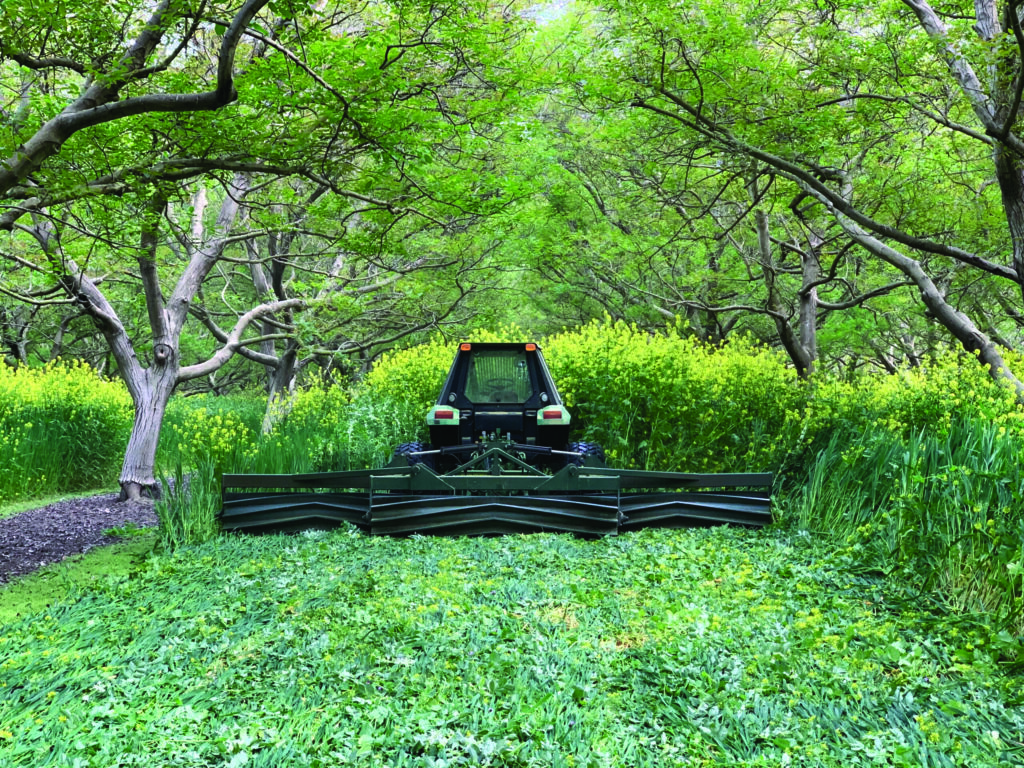
“We’re working to get 1-pound packages made to where we can fill and seal bags,” Unruh said. “We sell some into the commercial market and some direct-to-consumer. The company we sell the most walnuts to is Diamond Foods, a commercial buyer. But the whole walnut industry right now is upside down, so we’re not getting paid enough money.”
That’s a main catalyst for Harvest Valley, and why the couple is working to expand its reach at the farmers markets.
Soon, Unruh hopes to sign a contract with the fairgrounds to press walnut oil there so people can source a healthy alternative to olive oil, he said. With a similar heat threshold, walnut oil can be used for the same things as olive oil.







